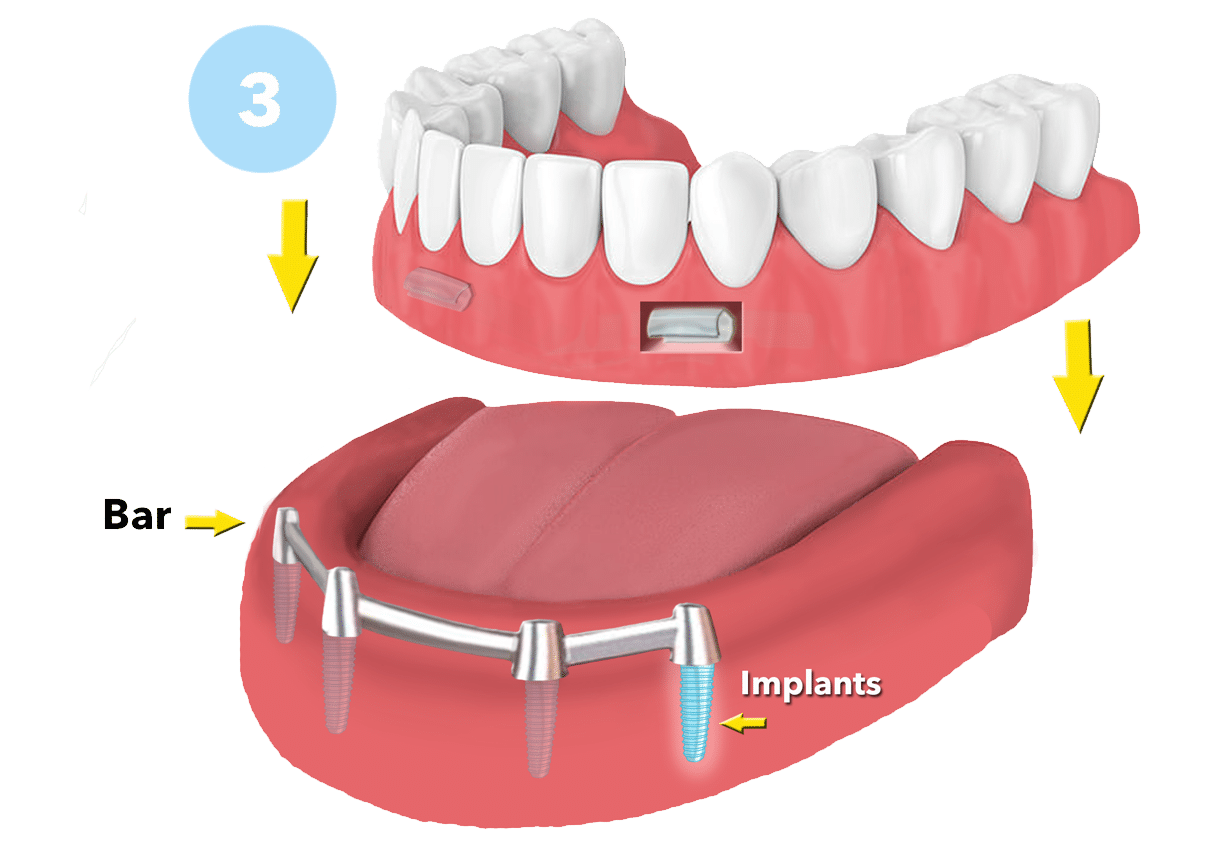Dental Implants: Exploring Your Options for Replacing missing teeth
When it comes to replacing missing teeth or securing dentures, dental implants stand out as a sophisticated and long-lasting solution. Whether you’re missing a single tooth, multiple teeth, or require full-arch restoration, there are several options available to suit your specific dental needs. Lets s explore the different types of dental implants and their unique benefits.
Single Tooth Implants
When a patient is missing a single tooth, a single tooth implant is often the preferred choice because you don’t have to damage adjacent natural teeth by replacing the missing tooth with a traditional fixed bridge. Single tooth implants are made of surgical grade titanium that are surgically placed in the jawbone, serving as a replacement for the tooth root. Once the implant fuses to the bone by a process called reintegration, a custom-designed dental crown is attached to the top of the implant , providing a natural-looking and fully functional replacement for the missing tooth.
Implant-Supported Bridges
For those who are missing multiple adjacent teeth, an implant-supported permanent fixed
bridge offers an effective and stable solution. Rather than grinding down natural teeth for support, this type of bridge is anchored by dental implants placed directly into the patient’s bone, providing enhanced stability and preventing the need to alter healthy adjacent teeth for a traditional bridge.
Implant-Supported Overdentures
Traditional dentures can sometimes be problematic due to issues with fit, stability, and bone resorption. Implant-supported overdentures address these concerns by utilizing dental implants to secure the denture in place. This not only enhances stability and comfort but also helps preserve bone density in the jaw, resulting in a more reliable and long-term solution for edentulous patients. There are many types of overdenture appliances that can be fabricated to accomplish even more stability of those people who have severely atrophy bone, or require the security of a more stable set of teeth.
All On 4 Dental Implants
As previously mentioned, All On 4 dental implants are a transformative option for patients in need of full-arch restoration. This approach ideally utilizes just four strategically placed dental implants to support a complete set of teeth, providing a secure and natural-looking alternative to traditional dentures. With the ability to minimize the need for bone grafting and expedite the restoration process. However, not all dental patients have enough quality and quantity of bone to support a full lunch of teeth with only four dental implants. That’s why many patients find out that they require two more additional implants to support arch Of fixed teeth. This design of full arch dental restorations are refer as All On 6 dental implant bridges. Both the All On 4 and All On 6 implant designs have become a popular choice for individuals seeking a comprehensive and efficient solution for extensive tooth loss.
Choosing the Right Option for You
When considering dental implants, it’s essential to consult with a qualified implant dentist who can assess your oral health, bone density, and individual treatment goals. Factors such as the condition of your remaining teeth, the extent of tooth loss, and quantity of available bone and your overall oral health will all influence the type of dental implant solution that’s best suited for you.
In conclusion, dental implants offer a range of options to address the many various needs of patients with missing teeth. Whether you require the replacement of a single tooth, multiple teeth, or a full arch, there is a specialized dental implant solution to restore the function and aesthetics of your smile. By exploring these options and working closely with your dentist, you can find the ideal dental implant solution to regain confidence in your smile and oral health for years to come.
The information provided in this blog is intended for general informational purposes only and should not be construed as professional dental advice. Readers are advised to consult with a qualified dental professional or healthcare provider for personalized dental care recommendations, diagnosis, or treatment. The content of this blog does not replace, supersede, or constitute a professional relationship with a licensed dental practitioner. Any reliance upon the information presented in this blog is at the reader’s own risk. The author and publisher of this blog are not liable for any adverse outcomes or damages resulting from the application of information provided herein. Additionally, dental care practices and standards may vary by location, and readers are encouraged to seek guidance from local dental professionals for specific dental care needs and considerations.


